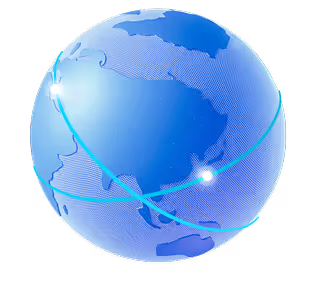Akamai to End CDN Services in China: What You Need to Know
Akamai recently announced it will discontinue its Content Delivery Network (CDN) services in mainland China on June 30, 2026. For many global businesses and content providers, this news goes beyond a simple headline: it signals the need to rethink how they serve—and satisfy—China’s vast internet user base. If you rely on Akamai’s local edges for websites, streaming, or real-time APIs, the clock is now ticking on your current setup.

That said, this isn’t all doom and gloom. A major exit from the Chinese market—by a leading name like Akamai—also creates an opportunity to review your approach, ensure compliance, and potentially enhance user experience more than ever before.
{{promo}}
Understanding the Challenges of Operating CDN Services in China
China’s internet environment stands out due to its strict regulations, unique ISP dynamics, and sophisticated filtering systems.
Even under normal circumstances, getting content into Chinese users’ hands quickly can be challenging.
Here’s why:
1. The Great Firewall (GFW) and Network Constraints
China’s “Great Firewall” is a robust system of internet governance. If your CDN routes content from outside China, your traffic may experience slowdowns—or, in some cases, be blocked.
To mitigate this, CDNs often need a physical foothold in China (in partnership with a licensed local entity) to minimize latency and avoid extensive filtering.
2. Licensing and Compliance
Serving content from within mainland China requires obtaining an Internet Content Provider (ICP) license issued by Chinese authorities. Domains without an ICP license cannot legally be hosted on local infrastructure.
Websites offering paid services or e-commerce typically need more advanced forms of licensing, adding another layer of complexity.
3. ISP Partnerships
China’s three largest ISPs—China Telecom, China Unicom, and China Mobile—have limited peering relationships. A CDN that forges direct connections to these telecom giants can greatly reduce packet loss and latency.
Conversely, global CDNs without robust in-country deals may see user traffic bounce around inefficiently, causing delays.
4. High User Expectations
China has over a billion internet users who are accustomed to fast load times and smooth streams, whether they’re shopping on Taobao, streaming the latest TV dramas, or playing online games.
Subpar performance is likely to erode trust and brand image in this digitally savvy market.
Akamai’s Strategy Shift: Why It Matters
Akamai pioneered CDN services worldwide, but in recent years, it’s pivoted heavily toward cloud computing and cybersecurity—areas now generating a large share of its revenue growth.
At the same time, the Chinese CDN market is increasingly dominated by local and regional specialists who are deeply entwined with state regulations.
What Triggered Akamai’s Departure?
Providers backed by Chinese tech giants have made enormous strides in coverage, performance, and compliance, leaving smaller slices of market share for foreign competitors.
- Maintaining an operational footprint in China requires ongoing compliance updates, licensing reviews, and content restrictions, all of which can be costly and resource-intensive.
- Akamai sees higher returns in areas like zero-trust security, application-layer defenses, and cloud compute. Exiting the China CDN segment frees them to double down on these core offerings.
How It Affects Existing Users
After June 30, 2026, any content served via Akamai’s “China CDN” will be routed from nearby countries instead of local PoPs. Expect:
- Increased Latency: Without in-country caching, page loads, file downloads, or video streams may slow dramatically.
- Potential Compliance Risks: If your business was depending on Akamai’s local presence to fulfill ICP or data-localization rules, those protections disappear.
- User Friction: Chinese audiences might encounter timeouts, buffering, or blocked resources, leading to unhappy visitors and potential revenue loss.
{{promo}}
Exploring Alternatives: Top CDN Paths for the Chinese Market
The good news? You have no shortage of CDN migration options for delivering content in China, ranging from powerful all-in-one cloud providers to boutique CDN specialists.
1. Major Cloud + CDN Combos
Some Chinese tech giants offer a spectrum of cloud services—compute, database, analytics—bundled alongside robust CDNs.
These providers often supply “one-stop shops” for everything from content caching to big-data analytics—handy if you need an integrated ecosystem.
2. Specialized Streaming-Focused Networks
For those running cdn video in China—especially video-on-demand, live broadcasts, or short-form content—streaming-focused providers excel at:
- Adaptive Bitrate streaming to minimize buffering
- Real-time analytics for audience metrics
- Highly distributed PoPs for instant video starts
3. Edge Platforms
If your application needs to run code at the edge—whether for personalization, real-time security, or custom routing—China-based edge platforms can push compute closer to your users.
This reduces the round-trip to your origin servers, enabling near-instant decision-making for AI, personalization, or concurrency-heavy apps like online gaming.
Evaluating Which Path Fits You
Akamai’s pivot underscores a broader industry trend where even established giants are rethinking their global strategies. For businesses operating in China, relying on a single provider increases risk.
To narrow down your shortlist, consider these aspects:
- Local PoP Distribution: More coverage across multiple provinces ensures consistent performance in smaller cities as well as major metros.
- Security & WAF: Look for DDoS protection, web application firewalls, and traffic filtering to keep your service secure.
- Regulatory Guidance: If you lack an ICP license, some providers offer help with the application process.
- Pricing Models: Some CDNs charge per gigabyte of data, others by number of requests, or in monthly tiers.
- Support in English and Chinese: If you’re an international company, bilingual support can make a big difference when troubleshooting.
Furthermore, by adopting a multi-CDN provider strategy, you can diversify your traffic routes, reduce dependency on any one vendor, and benefit from the unique advantages each provider offers—be it local optimization, specialized streaming, or robust security.
{{promo}}
How to Transition from Akamai to a New CDN Provider
Moving your workloads off Akamai’s soon-to-be-terminated Chinese PoPs doesn’t have to be painful.
A structured approach will help you switch vendors—potentially improving performance in the process.
Step 1: Inventory Your Akamai Setup
Figure out where and how your Akamai distribution is used:
- Domains, subdomains, and APIs mapped to Akamai’s China edges
- Caching or security policies you depend on (e.g., WAF rules, origin shielding, geoblocking)
- Major traffic patterns (peaks, concurrency, file sizes)
Step 2: Shortlist Providers
Armed with your inventory, explore the market. If you rely heavily on streaming, a specialized streaming CDN might fit best.
If you want an all-in-one environment, cloud-based CDNs like Alibaba or Tencent Cloud may be your go-to.
Create a quick chart comparing node coverage, key features, licensing support, and cost estimates.
Step 3: Replicate and Test
Recreate your Akamai configurations (cache rules, custom headers, WAF scripts) on the new CDN.
Set up a testing environment or a pilot subdomain.
- Latency Measurements: Test from multiple Chinese regions to get an accurate performance picture.
- Cache Efficiency: Ensure that static objects, large downloads, and dynamic segments are processed correctly.
- SSL/TLS: Confirm that your certificates and ciphers align with your security standards.
Step 4: Gradually Shift Traffic
Rather than flipping 100% of traffic in one go:
- Move a small percentage of requests to the new CDN.
- Validate performance, watch logs for errors, and fix any discrepancies.
- Increase traffic allocation in phases until you’re fully migrated.
Step 5: Simplify with IO River’s Migration Tool
If the idea of retooling everything from scratch gives you a headache, IO River offers specialized migration capabilities. With just a few steps, you can:
- Import Akamai Configurations Automatically: Our system reads your existing setups—caching, WAF, and routing rules—reducing manual duplication.
- Perform Real-Time Comparisons: Observe performance deltas between Akamai and your new CDN in a side-by-side dashboard.
- Safe Rollbacks: If you catch unexpected errors, revert traffic to the old pipeline instantly.
That means you can fine-tune your next CDN environment while keeping your content consistent.
It’s a streamlined way to avoid downtime, losing user trust, or frantically debugging in the middle of a critical revenue event.
Step 6: Verify Compliance and Finalize
Lastly, ensure regulatory matters are in place:
- ICP Licensing: Confirm your domain is registered and compliant for commercial (or non-commercial) activity.
- Data Localization: If your industry mandates Chinese user data remain within China, confirm your new CDN or hosting arrangement supports local data storage.
- Monitoring & Logging: Keep a close eye on real-time analytics and logs to spot performance hiccups or security threats quickly.
{{promo}}
The Shifting CDN Ecosystem
Akamai’s decision to exit mainland China is not an isolated event. In the past few years, several other CDN providers have either retrenched or completely halted operations:
- Edgio: Faced severe financial constraints, ultimately shutting down key aspects of its network.
- StackPath: Announced partial closures in certain markets, streamlining its portfolio.
- Lumen: Pulled back from its CDN offerings, focusing on core telecom and edge services instead.
These changes reflect the reality that running a large-scale CDN—especially in complex markets like China—is both capital- and compliance-intensive.
While Akamai remains a massive industry player overall, its local departure underscores how even “too big to fail” companies sometimes pivot away from demanding or less-lucrative regions, once again signifying the need for a multi-CDN architecture.
Making Your Move
- Akamai’s departure is a real deadline. Come June 30, 2026, Akamai’s China PoPs will switch off, forcing offshore routing and impacting end-user performance.
- China’s market is fundamentally different. To consistently deliver low-latency experiences, you need strong local ISP ties, an ICP license, and a presence that navigates the Great Firewall effectively.
- Plenty of CDN choices remain. From large cloud vendors offering integrated solutions to hyper-focused streaming providers, you can find a match for your business needs.
- Plan your migration early. Inventory your Akamai usage, build a test environment, and roll out changes gradually.
- The CDN industry is in flux. Edgio, StackPath, Lumen, and now Akamai have all refocused or exited certain markets, making it more important than ever to secure a reliable, future-focused solution.
Akamai’s end-of-service date may feel far off, but the earlier you strategize, the better poised you’ll be to keep (and potentially improve) the user experience for your Chinese audience.



.png)
.png)
.png)




